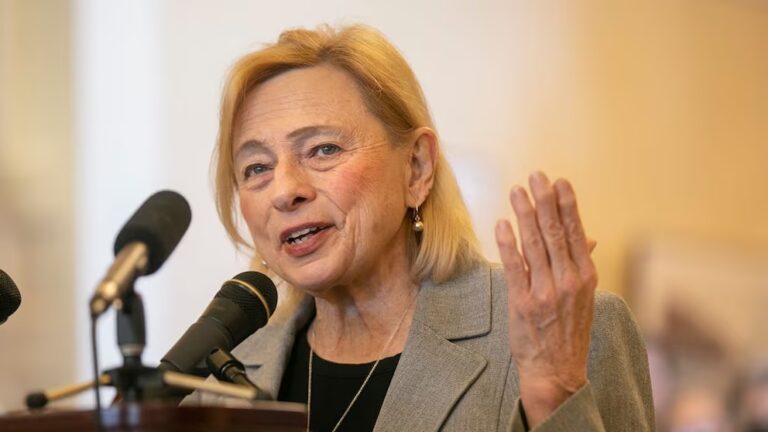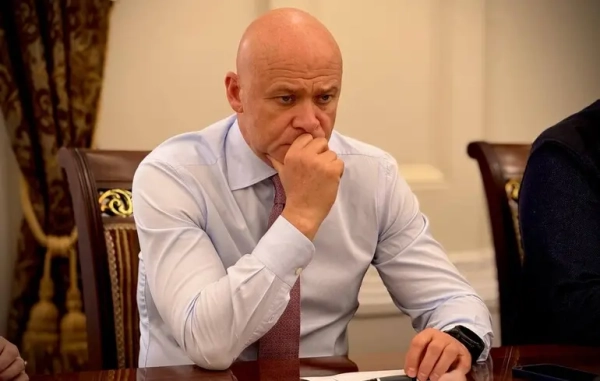A surprise offensive on October 27 stunned the junta. A revolution could build a new Myanmar.

Thomas De Cian/NurPhoto via Getty Images Ellen Ioanes covers breaking and general assignment news as the weekend reporter at Vox. She previously worked at Business Insider covering the military and global conflicts.
A coalition of ethnic armed militias in Myanmar have launched what could be the best possible chance to overthrow the military government that has controlled the country since a 2021 coup ousted the democratically elected National League for Democracy (NLD).
If successful, this could be the groundwork for a more normalized democracy for a country that has historically been dominated by military juntas and dictators. Engagement from civil society has been high and is a key factor that can turn military victories into long term successes. Still, nothing is guaranteed and the fight is likely to be difficult.
On October 27, the Three Brotherhood Alliance, a coalition of three ethnic armed groups launched a well-coordination offensive in the eastern Shan state, the largest of Myanmar’s seven states by land area. The surprise attack successfully captured several government military installations by the Chinese border and has also inspired other armed groups to launch their own successful campaigns against the repressive Tatmadaw or State Administration Council, as the junta is called in Myanmar.
Myanmar has been under military rule for much of its history as an independent nation; as in many other Southeast Asian nations, democratic movements have struggled to gain traction against powerful and entrenched military interests. After a decade of democratic reforms driven by a series of popular uprisings against the military government Myanmar seemed to break from the past; in 2015 and 2020, the country held free elections, which the NLD won handily. But the Tatmadaw seized power in 2021, igniting nearly three years of brutal civil conflict in which the government has killed thousands of civilians.
Though the Three Brotherhood Alliance and similar ethnic armed groups have not taken over the whole country and the Tatmadaw still has far more firepower than any of the armed groups, the October 27 offensive and ensuing military successes have kindled a cautious hope that the military dictatorship could be toppled.
So far the revolutionary forces have successfully cut off about 40 percent of the Tatmadaw’s land access to China, taken over military installations, major border crossings, several towns, and transit routes — as well as forcing government troops to defect en masse.
Though there is likely still a long, brutal war to be fought to dislodge the Tatmadaw from power, revolutionary forces — both armed groups and civil society resistance — are also tentatively working toward a new kind of democratic, grassroots governance model in hopes of preventing violent military governments in the future.
The anti-government offensive is just beginning, but its success is galvanizing
Armed ethnic groups are nothing new in Myanmar — it’s a highly ethnically diverse nation, but the majority Bamar group has always enjoyed a privileged position in society, including in the military and the government. Meanwhile smaller ethnic groups, such as the Shan, Karen, and Rakhine groups, have historically faced serious discrimination, both under British colonial rule and under military dictatorships.
After the 2021 coup, ethnic militias like the Arakan Army, the Myanmar National Democratic Alliance Army and the Ta’ang National Liberation Army which make up the Three Brotherhood Alliance have been leading the charge against the Tatmadaw. In many cases they have also allied with People’s Defense Forces groups (PDFs), militia groups formed or supported by the shadow National Unity Government (NUG).
The October 27 offensive — which the Three Brotherhood Alliance calls “Operation 1027” — likely took months of planning and has shown impressive coordination between the alliance, other ethnic armed organizations, and PDFs. That’s a new dimension in the ongoing fight against military leadership, experts told Vox.
“This level of cooperation is not exactly unprecedented, but I think the scale of the operation and what they’ve managed to pull off in the last month — I’ve never really seen anything to this extent,” David Mathieson, an independent analyst based in Thailand, told Vox. “I think it shows a combination of long-term cooperation between the three main groups,” or the Three Brotherhood Alliance, which have been collaborating in some fashion since 2009, and more recent collaboration with other ethnic armed organizations such as the Bamar People’s Liberation Army, Mathieson said.
“Our primary objectives in launching this operation are multi-faceted and driven by the collective desire to safeguard the lives of civilians, assert our right to self-defense, maintain control over our territory and respond resolutely to ongoing artillery attacks and air strikes” perpetuated by the military government against civilians, the alliance said in a statement announcing Operation 1027. The statement also said the alliance is “dedicated to eradicating the oppressive military dictatorship, a shared aspiration of the entire Myanmar population.”
That goal, to remove the Tatmadaw from power, has been the galvanizing force in the month-long uprising, uniting disparate groups with competing priorities toward a common goal. The Tatmadaw has, over the years, engaged in what Lucas Myers, Senior Associate for Southeast Asia at the Wilson Center, called a “divide and rule” strategy, with the military junta giving special concessions to certain groups, thereby encouraging competition between the different armed actors.
But since 2021, the government’s brutal attacks against not only ethnic minorities but also Bamar civilians has encouraged a tentative trust and cooperation between various armed groups, as well as between those groups and the NUG.
Another major aspect of the resistance’s success is the military’s weakness. Morale is low, and defections are high, meaning that even though the military has superior artillery and air dominance, it just doesn’t have the manpower to mount an effective defense in any of the areas that the resistance has taken over, nor does it have the strategy to put together an offensive of its own.
“They’re essentially adopting a reprisal strategy — they’ve been just bombing civilian targets and striking the EAOs heavily,” Myers said. “It’s essentially a punishment strategy.” The government does have air superiority and can attack with fighter jets and attack helicopters, since the resistance forces don’t yet have effective anti-aircraft capabilities, Myers said. “But at the same time, I think the military is stretched to the point that they have limited capability, and they can’t strike everything all at once. Their pilots are overstretched, reportedly — that’s a high tempo.”
Myanmar can’t go back to the days of Aung San Suu Kyi
More than just a military sea change, the 1027 and subsequent offensives are part of a potential political revolution and demonstrate a desire to break with the old, hierarchical, and exclusive governance structures — both under the Tatmadaw and the short-lived democratic transition.
“The military maintained significant sway, even during the democratization period — they had 30 percent of the seats in parliament guaranteed to them, which essentially gave them a veto over anything constitutional, they maintained control over several key ministries,” Myers said. “It was very much not a democratic system.”
There’s also a “sea change,” as Myers said, in the opinions of the Bamar majority about the need to incorporate ethnic minority voices into the larger government, particularly after the failure of Suu Kyi’s government and its defense of the horrific massacre and mass displacement of the majority-Muslim Rohingya ethnic minority in 2017. The NUG has adopted the idea of an intersectional revolution and the need to incorporate minorities into a future democratic federal state — but in order for that to happen, the NUG must actually commit to bringing those ethnic minority actors into any future government.
Ethnic armed groups and their related political and civil society organizations are also demanding more autonomy over local affairs, which Mathieson and Myers both said would be critical for a political future. Over Myanmar’s post-colonial history and particularly since the 1962 military coup, the government has centralized power in the Bamar heartland and within the Bamar ethnic group, leading to autocratic governance.
“A lot of these groups are like, ‘Look, it’s not as if we’re going to go to the NUG with our hats in our hands and basically say, [autonomy] is what we want,’” Mathieson said. Rather, that autonomy and a federalized governance system are going to be requirements for most of these groups. “A lot of these groups are like, ‘Look, we’re building our form of federalism from the ground up, we’re seeing the local perspective, and what you — the NUG — and your largely Western supporters are trying to do is build a top-down federalism.’”
Some of the ethnic armed groups, like the Kachin Independence Army (KIA) and the Karen National Union (KNU), have broader community investments, as Htet Min Lwin and Thiha Wint Aung wrote for The Diplomat on Friday. Since the 2021 coup, the KIA and KNU have been involved in political activities like “training young protesters and providing sanctuary to displaced members of parliament to getting involved in various consultative councils.”
Civil society groups and public support have also been a crucial part of the successful military operation — as the Lwin and Aung point out, medical professionals with the Civil Disobedience Movement have been caring for the wounded and coordinating other logistical activities. Widespread civil society engagement is a sign that the revolution has legitimacy among the people of Myanmar and that they, too, are committed to the end of military rule and a potential democratic future.
But that future is far off — though the military’s advantage is waning, there is still likely a long and bloody fight ahead before the revolutionary forces gain control of the country. And even if that happens, the political work of building an inclusive democratic state from one that has been exploited and oppressed for decades will be its own struggle.
Sourse: vox.com






